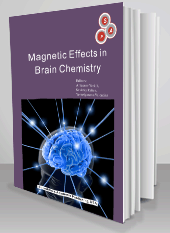Scientific & Academic Publishing
SAP is an open access publisher of journals covering a wide range of academic disciplines.
SAP is an open access publisher of journals covering a wide range of academic disciplines.

Description
The book is devoted to a very important biological organ of the human brain.
In this book presents the basic characteristics and functions of the brain and chemistry.
Earlier the authors were discovered two new Aibassov-Dorfman, Aibassov-Yuriev reactions.
The authors proposed three Klopman-Dorfman-Aibassov, Nernst-Aibassov and Sonnon-Aibassov equations for solving the magnetic and relativistic effects in catalysis and chemistry of brain.
The book will be useful for engineers and chemists working in bioorganical chemistry for teachers and students in related disciplines, as well as for researchers and graduate students interested in biochemistry.
Table of Contents
Introduction
Chapter 1: Magnetism
1.1. The Interaction of Permanent Magnets
1.2. The Interaction of the Magnets with a Constant Magnetic Field
1.3. The Motion of Charged Particles in Electric and Magnetic Fields
1.4. A Charged Particle in an Electrostatic Field
1.5. The Motion of a Charged Particle in a Uniform Electrostatic Field
1.6. Motion of a Charged Particle in a Uniform Magnetic Field
1.7. Movement along a Helical Path in a Uniform Magnetic Field
1.8. Maxwell's Equations
1.9. Energy Transfer in the Electromagnetic Field
1.10. The Increase in the Magnetic Field Energy
1.11. Energy Transfer during Heat Release
1.12. Theorem on the Flow of Energy of the Electromagnetic Field
Chapter 2: The Brain
2.1. The Structure of the Brain
2.2. The Chemistry of Vision
2.3. The Chemistry of Taste
2.4. The Chemistry of Smell
2.5. The Chemistry of Touch
2.6. The Chemistry of the Vestibular System
Chapter 3: The Information
3.1. Quantities of Information
3.2. Shannon–Hartley Theorem
Chapter 4: Synthetic and Biophysical Efforts toward an Understanding of RNA Structure
4.1. A Detailed Look at RNA-small Molecule Interactions
4.2. The Rationale for RNA-driven Drug Discovery
4.3. A Closer Look at Inhibition of the HIV-1 Tat-TAR System
4.4. Conclusions on RNA-based Drug Discovery
Chapter 5: Forays into Rhodium-Catalyzed, Guanidine-Containing Combinatorial Libraries
5.1. Overview
5.2. Previous Combinatorial Approaches to Scaffold Libraries
5.3. 1,3-Dipolar Cycloadditions in Combinatorial Chemistry
5.4. The Prevalence of Guanidines in Nature
5.5. The Development of a [2.2.1] Heterobicyclic Scaffold
5.6. Convergent Assembly of Scaffold Molecules
5.7. Methods and Materials
Chapter 6: Biophysical Characterization of HIV-1 Tat-TAR and Related Systems
6.1. Overview
6.2. Screening of a Combinatorial Library Using Gel Electrophoresis
6.3. Determining Gross Structural Changes Using Native Gel Electrophoresi
6.4. Other Biochemical Techniques Used to Probe RNA-Protein Complexes
6.5. A More Rigorous Approach: Thermal Melting Analysis of RNA
6.6. Binding Studies Using Thermal Melting Experiments of HIV-1 TAR RNA and Related Systems
6.7. Methods and Materials
Conclusions